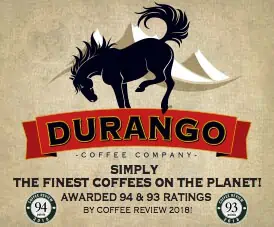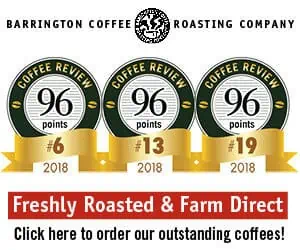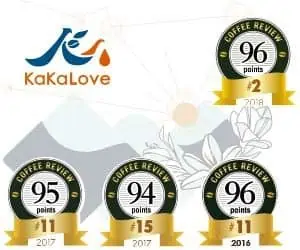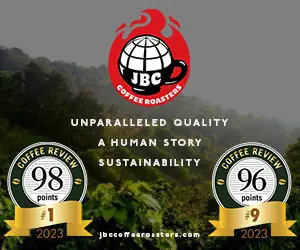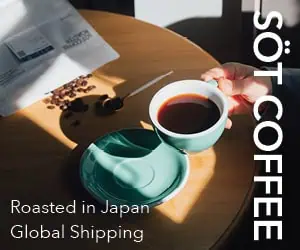Courtesy of Kenneth Davids, 21st Century Coffee: A Guide
Until recently, Jamaica Blue Mountain was one of the world’s most recognizable and celebrated coffee names. It still is, in some circles, but the name and its fame appear to be increasingly eclipsed by the flood of new names and new understandings about coffee.
The central Blue Mountains of Jamaica are an extraordinary landscape. The higher reaches are in almost perpetual fog, to which the tropical sun gives an otherworldly glow, as though the light itself has come down to settle among the trees. The fog slows the development of the coffee, producing a denser bean than the sometimes modest growing elevations (as low as 3,000 feet or 900 meters) might produce elsewhere.
Jamaica Blue Mountain has been a celebrated coffee since at least the early 19th century, when for a brief time Jamaica led the world in coffee production. After World War II the British colonial government, alarmed that undisciplined production was on the verge of ruining the Blue Mountain reputation, instituted a rigorous program of regulation and quality control under leadership of the newly established Coffee Industry Board of Jamaica.
After Jamaica achieved its independence from Britain, the new Jamaican government continued that coffee policy, regulating and monitoring all aspects of coffee production, and both publicizing and vigorously protecting the Blue Mountain identity through a system of licensing and monitoring. Although the Coffee Industry Board is often accused of selling ordinary coffee at high prices on the basis of name alone, Jamaica’s success at supporting and maintaining the Blue Mountain brand certainly merits credit, given the relative failure of other Caribbean origins to achieve anything similar in way of support of their coffee industries and the many small holders dependent on those industries.
Volume Increases, Quality Decreases
In the mid-1970s, when I first tasted Jamaica Blue Mountain from a mill that exported a famous mark called Wallenford Estate, it was a fine coffee: lacking aromatic range and drama, perhaps, but impressively balanced, resonant and complete. In the 1970s and 1980s, however, the Coffee Industry Board began investing in Jamaica Blue Mountain with money provided by Japanese interests. New mills were constructed that use the shortcut version of the wet-processing method called mechanical demucilaging, and volume increased dramatically while quality tended to decrease, despite the Coffee Industry Board’s efforts to maintain it.
Buying Jamaica Blue Mountain Coffee Today
Jamaica Blue Mountain at best is a classic cup of the subtly distinctive Caribbean style: round, low in acidity but vibrant, full in mouthfeel with a deep, brothy resonance. Currently, the Mavis Bank mill — or Mavis Bank Coffee Factory, as Jamaicans call it — produces the most respected Blue Mountain. It draws coffee fruit from small holders in the higher elevation part of the Blue Mountains, and it is a complete, integrated mill that performs all processing on-site using traditional methods. The Coffee Industry Board also allows some private farms to process their own coffees. These private-farm coffees, like the Mavis Bank, may offer more persuasive and complete renditions of the classic Blue Mountain style than typically provided by the bulked, standard-issue Jamaica Blue Mountain coffees.
Jamaica Blue Mountain’s fame and high prices have encouraged the usual deceptive blender creativity. We see Blue Mountain blends that contain very little Blue Mountain coffee, or Blue Mountain “Style” blends that contain no Blue Mountain whatsoever. These can be attractive coffees, but they are not Blue Mountain.
Grading and Blue Mountain
Grading in Jamaica is taken quite seriously, given the importance of branding and licensing. Only coffees grown at elevations between 3,000 to 5,600 feet (910 to 1,700 meters) can be licensed and sold as Jamaica Blue Mountain. Coffee grown between 1,500 to 3,000 feet (460 to 910 meters) can be sold as Jamaica High Mountain; coffee grown below 1,500 feet (460 meters) only as Jamaica Supreme or Jamaica Low Mountain.
Jamaica Blue Mountain Coffee Ratings and Reviews
Click here to view ratings and reviews of Jamaica Blue Mountain coffee and coffee from Jamaica.

